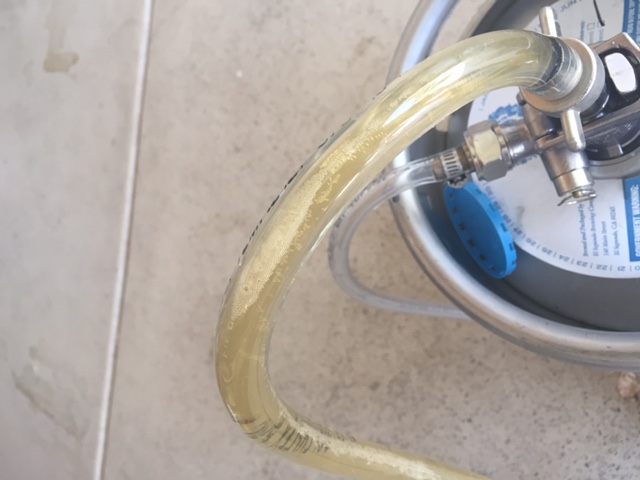Here's my situation, and I've scoured the threads with no luck. I'm swimming in a virtual sea of resistance, line diameters, vols, temps, and pressures, LOL.
My set up:
Jockey box with:
50' 3/8 OD SS coil
5.5' 3/8 ID PVC tubing from keg to coil
6" 3/8" ID tubing from coil to faucet.
Faucet typically sits 18-24" above center of the keg
Keg of Coors Light 2.2 vols (?) in an ice/water bath, probably 36ish degrees
Coils in an ice/water bath.
Resistances are as follows:
Coil - 10 PSI (50'*.2)
Beer/faucet line resistance .6 PSI (6'*.11)
Faucet height 1 PSI (2"*.5)
Lines balanced to 11.6 PSI
Beer @ 36ish degrees = 8-9 pounds
What PSI should I set the regulator at? The company I bought the jockey box says that with those lines the regulator should be set at 10-15 PSI. I do that and all I seem to get is foam. Tons of it, like a full cup.
I've done the math, I think, and it just doesn't add up. Should I run smaller lines to create more resistance? But then I'l need to crank up the PSI to compensate for it and risk over carbing the keg.
Any advice is greatly appreciated. I've owned this jockey box for 10 years and it's never seemed to be dialed in.
My set up:
Jockey box with:
50' 3/8 OD SS coil
5.5' 3/8 ID PVC tubing from keg to coil
6" 3/8" ID tubing from coil to faucet.
Faucet typically sits 18-24" above center of the keg
Keg of Coors Light 2.2 vols (?) in an ice/water bath, probably 36ish degrees
Coils in an ice/water bath.
Resistances are as follows:
Coil - 10 PSI (50'*.2)
Beer/faucet line resistance .6 PSI (6'*.11)
Faucet height 1 PSI (2"*.5)
Lines balanced to 11.6 PSI
Beer @ 36ish degrees = 8-9 pounds
What PSI should I set the regulator at? The company I bought the jockey box says that with those lines the regulator should be set at 10-15 PSI. I do that and all I seem to get is foam. Tons of it, like a full cup.
I've done the math, I think, and it just doesn't add up. Should I run smaller lines to create more resistance? But then I'l need to crank up the PSI to compensate for it and risk over carbing the keg.
Any advice is greatly appreciated. I've owned this jockey box for 10 years and it's never seemed to be dialed in.








































![Craft A Brew - Safale S-04 Dry Yeast - Fermentis - English Ale Dry Yeast - For English and American Ales and Hard Apple Ciders - Ingredients for Home Brewing - Beer Making Supplies - [1 Pack]](https://m.media-amazon.com/images/I/41fVGNh6JfL._SL500_.jpg)
























